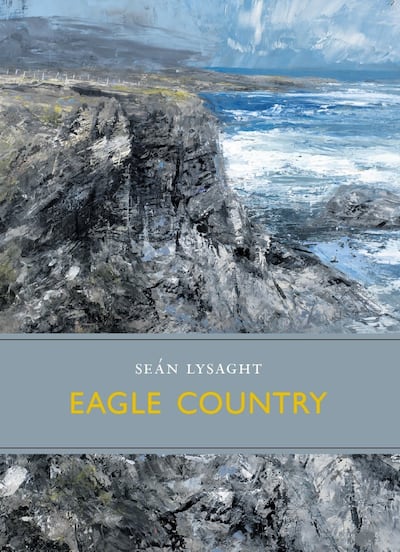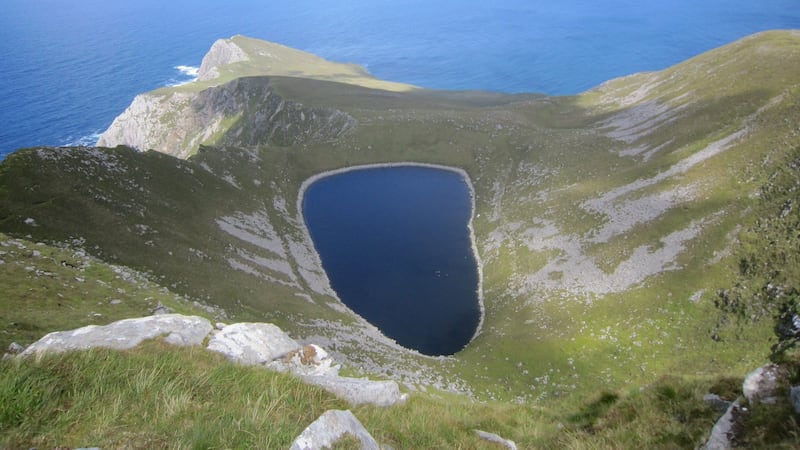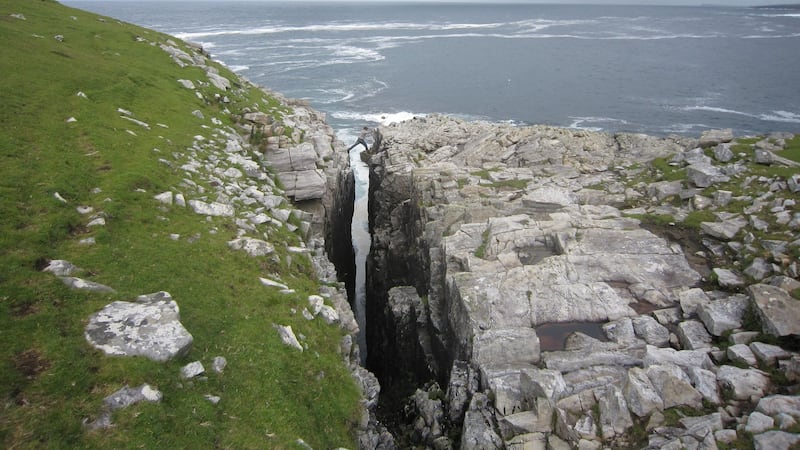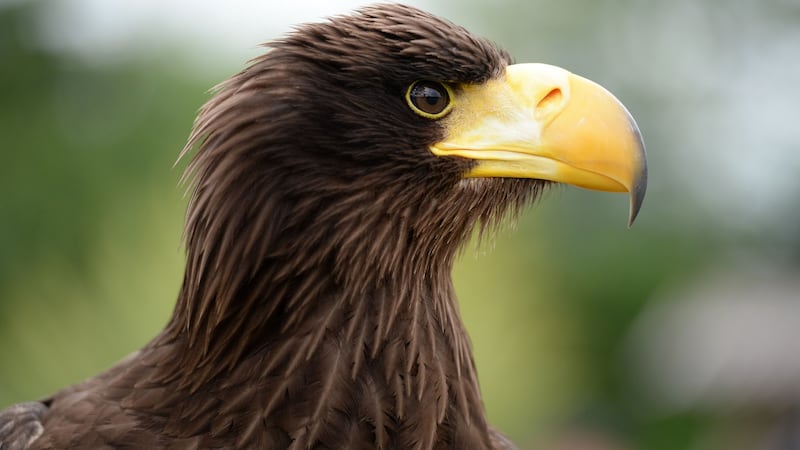
I saw my first wild sea eagles in Norway in 2001: one morning I stepped out of the timber chalet where we were staying near Trondheim and saw a pair of these huge raptors fly across a clear sky in a gap between conifers. They were like a brief apparition out of antiquity, silent and commanding.
By then, a reintroduction programme had started in Donegal, to return the golden eagle to its former haunts in the mountains of the west. I knew that the sea eagle had also been at home along the west coast up to the nineteenth century, and this view of sea eagles in Norway haunted me.
When I got back home to Mayo, I read through travel writings from the nineteenth century, hunting for eagle references: Achill had been an eagle hotspot; so had Killary Harbour; Canon Caesar Otway had gasped in awe at the numbers of sea eagles he saw at Benwee Head, on the north Mayo coast, in the 1830s: ‘I never saw so many of these birds at one time, except at Horn Head [Donegal].’ Some years later, Charles Richard Weld described sea eagles on Achill flying past, ‘one so near us that we heard the rustle of its plumes, and saw its restless eye.’
As the nineteenth century wore on, the Victorian obsession for killing and collecting reached even as far as the north Mayo coast, where one cliffman near Céide collected sea eagle eggs for a London dealer. In the Erriff Valley during the 1880s, a well-known eyrie was regularly robbed of eggs and young by an enterprising local, ‘who sold them at the car in Leenane’. Where egg collectors and trophy hunters went, poisoners followed: in 1891, a report from Achill mentioned eleven golden eagles poisoned in one year.


I wrote up this research as an article which was published by the RDS in 2004; when Lorcan O’Toole, who manages the eagle reintroduction project in Donegal, read the piece, he asked me if I had visited all the sites in question. I had not, I told him, my article was based on desk research. Nonetheless, his question stayed with me as a challenge; 10 years later I set out to visit all of Mayo’s old eagle territories in a summer.
By that time, a second reintroduction programme, for sea eagles, had started in controversial circumstances at Killarney in 2007. A protest of sheep farmers had greeted the first planeload of young birds from Norway: they claimed they hadn’t been consulted, unlike their counterparts in Donegal, where the IFA had approved the project; they said they were worried about sheep stocks. One farmer was heard on television threatening to shoot eagles if they got out of hand.
My eagle walks began in April at Drumilra (‘eagle ridge’), an unprepossessing area of upland between Newport and Castlebar with a view of Mayo’s drumlin country. Following eagle records in place names and writers’ accounts took me to several peaks of the Nephin Beg mountain range, from Birreencorragh and Mount Eagle in the east, to Corslieve in the north, and Glendahurk in the west. My journal records tried to keep pace with weather and vegetation, wildlife and landscapes, and the conversations I had with walking companions and sheep farmers.
An Irish Times readers’ poll that year had concluded that Mayo was the best county in Ireland for wilderness. Setting aside the quad bikes that disrupted my meditations on the top of Mount Eagle, the poll was vindicated: only on Mweelrea, the highest peak in Connacht, was there anything like walker traffic on the mountain. As I rambled on my own, or in the company of a friend or my wife Jessica, the coasts and uplands of Mayo were almost completely deserted.
Some of my best memories of that year were formed in northwest Mayo, which the naturalist Richard James Ussher visited in 1898 in search of eagles; he declared that ‘The grandeur and picturesqueness of this coast far exceed that of any other that I have seen.’ Before the reintroduction, the last sea eagles in Ireland had bred at Spink, on the cliffs between Portacloy and Porturlin, in the northwest Mayo Gaeltacht, an area better known in recent years for the dispute about the Corrib Gas pipeline. This stretch of coastline is still, even in the era of the Wild Atlantic Way, virtually unapproachable, and to my mind it is still prime territory for sea eagles. I camped at Portacloy in late June, where the bay was bright with kayaks for the youngsters attending the local Irish summer camp. In this small enclave, where the language is still holding on, I chatted eagles and eagle lore with a few of the locals and met none of the hostility towards these birds that makes the headlines.

Given that my project was about eagles present as well as past, I travelled to Lough Derg in Clare that year to see where sea eagles were breeding, on an island near Mountshannon: it turned out that our campsite was just a shout away from the nest. Our travels also took us to west Cork and a campsite at Eagle Point near Bantry; we saw a sea eagle pair established on Garinish Island, and another bird near Kenmare.
Despite Mayo’s rich legacy of eagle records and placenames (‘eagle crag’, ‘eagle wood’, ‘eagle green’, ‘Mount Eagle’) the reintroduced birds have been slow to revisit the county. The occasional wanderer turns up – a golden eagle stayed in the Nephin Beg mountains for several weeks in 2006 – but records have been sporadic and casual. So far, Ireland’s sea eagles have shown a preference for the south of the country and the Shannon valley; they have also spread to Connemara, but Mayo is seldom visited. And we know that the small population of golden eagles in Donegal is unlikely to expand dramatically.
My own searches weren't rewarded until October, when finally, by accident, I spotted a sea eagle in Mayo, a great, big lumbering bird in a murk of rain and a swarm of crows, flying near Ballinrobe on its way to Lough Mask.
Seán Lysaght's book, Eagle Country, will be published by Little Toller in April








